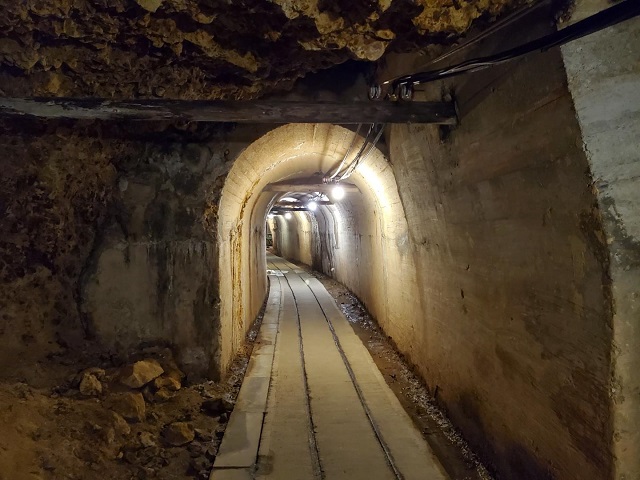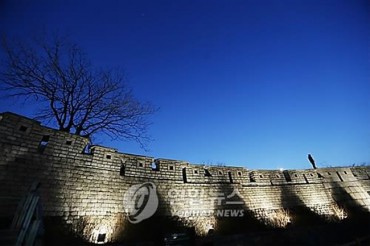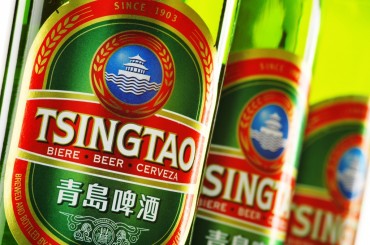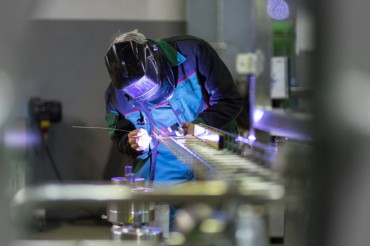
The Sado gold mine in the island of Sado in Niigata Prefecture, Japan is seen in this photo captured from the homepage of the mine.
SEOUL, Jan. 28 (Korea Bizwire) — The already fraught ties between South Korea and Japan were dealt yet another setback Friday when Tokyo plowed ahead with the recommendation of a former mine linked to wartime forced labor as a UNESCO World Heritage candidate despite Seoul’s objections.
After weeks of deliberation, Japanese Prime Minister Fumio Kishida announced the plan to nominate the gold and silver mine on Sado Island for the 2023 heritage designation, considering its historical value.
The move further aggravated tensions in the two countries’ relations already frayed over wartime history, trade, Japan’s planned discharge of radioactive water into the ocean and its persistent claims to Korea’s easternmost islets of Dokdo.
The latest flare-up of tensions is also expected to unnerve U.S. policymakers keen on bringing the two Asian allies closer together to confront an assertive China and a nuclear-ambitious North Korea.
Last week, Japanese media reported the Tokyo government was considering delaying the nomination due to Seoul’s protest.
But the move took a twist shortly before the application deadline amid rising pressure from hawks in the ruling Liberal Democratic Party and public backing for the drive for the heritage designation.
Earlier this week, Sanae Takaichi, the chairwoman of the DLP’s Policy Research Council, said the nomination concerns “the dignity of the nation” and pressured the government to submit the recommendation.
Former Prime Minister Shinzo Abe also threw his weight behind the push for the heritage designation.
South Korea voiced “strong regrets” over Japan’s push for the coveted heritage designation and called for its retraction. Seoul is expected to launch a diplomatic blitz against the designation, highlighting the negative historical connotations associated with the mine.
Observers said politicians and officials in both countries might have little wriggle room to defuse the renewed historical tensions ahead of South Korea’s presidential election in March and Japan’s upper house election slated for July.
At the start of the Kishida administration in October, the prime minister’s relatively moderate foreign policy stance raised cautious hope for a thaw in Seoul-Tokyo ties, but this year’s election in Japan might lead him to align more with party hard-liners, analysts said.
“The Sado mine issue has turned into a politically sensitive issue due to the intensifying rivalry between South Korea and Japan, further deteriorating the friction over history and trade,” Lee Won-deok, professor of Kookmin University, said.
“Behind this fuss is the prolonged disputes over forced labor and comfort women as the two nations still remain apart over how to solve the historical issues,” he added, referring to the victims of Japan’s wartime sexual slavery.

An underground shaft of a former gold and silver mine on Sado Island in Niigata Prefecture is seen in this photo taken on Jan. 4, 2021. (Yonhap)
In a landmark 2018 ruling, South Korea’s Supreme Court ordered several Japanese companies to compensate Korean forced labor victims, but they refused to comply with the ruling on grounds that the reparation issue was already settled by a 1965 treaty aimed at normalizing Korea-Japan ties.
Since then, the Korean plaintiffs continued their legal battle to seize assets of the Japanese companies, including Nippon Steel and Mitsubishi Heavy Industries, but the companies have appealed to the court orders to prevent liquidation of their assets in Korea.
Tokyo’s wartime sexual slavery has also been a thorn in the bilateral relations.
Last month, Foreign Minister Chung Eui-yong said Seoul has offered various solutions to resolve the issue, but no progress has been made as Japan sticks to its earlier stance that a 2015 bilateral accord should be kept.
Based on the 2015 accord, Japan offered 1 billion yen ($8.7 million) for a foundation for comfort women, and about $3.7 million was handed over to the surviving victims and the families of the deceased.
In 2018, the Moon Jae-in administration disbanded the foundation and allocated 10.3 billion won to a gender equality foundation.
Tokyo has repeatedly demanded Seoul provide “acceptable” solutions to settle the prolonged forced labor and comfort women disputes, but the two sides have failed to narrow their differences.
The reemergence of historical enmity between Seoul and Tokyo came as the U.S. is trying to forge a stronger trilateral partnership with the Asian allies to deter rising threat from North Korea.
Pyongyang has been ratcheting up tensions with a series of missile tests since the start of the year, including two rounds of what it claims to be a hypersonic missile.
In a more ominous sign, the Kim Jong-un regime issued a thinly-veiled threat last week to lift its yearslong self-imposed moratorium on nuclear and long-range ballistic missile tests.
South Korea, the U.S. and Japan are known to be in talks to hold three-way foreign ministerial talks next month to discuss joint efforts to defuse tension on the peninsula.
But doubts linger over whether they could put up a united front amid historical tensions between Seoul and Tokyo.
In November, vice ministers of South Korea, U.S. and Japan held trilateral talks in Washington, but Japanese diplomat boycotted to a joint conference over in protest over South Korean police chief’s visit to Dokdo
South Korea has been in effective control of the islets with a small police detachment since its liberation from Japan’s 1910-45 colonial rule.
(Yonhap)






